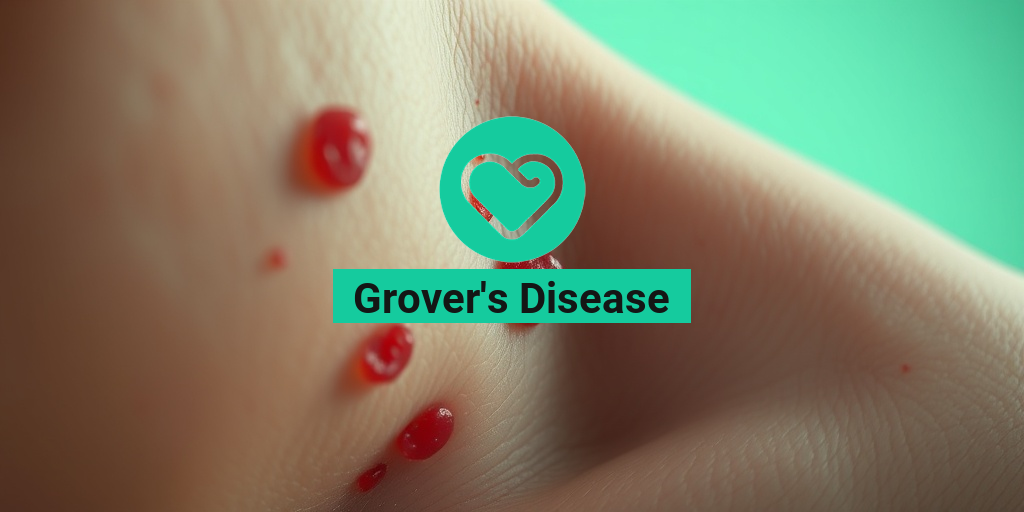What Is Prader-Labhart-Willi Fancone Syndrome?
Prader-Labhart-Willi Fancone Syndrome, commonly referred to as Prader-Willi Syndrome (PWS), is a rare and complex genetic disorder that affects approximately 1 in 15,000 to 1 in 30,000 people worldwide. 🌎
This syndrome was first identified in 1956 by Swiss doctors Andrea Prader, Heinrich Willi, and Alexis Labhart. Since then, extensive research has shed light on the causes, symptoms, and management of PWS. In this article, we’ll delve into the world of Prader-Labhart-Willi Fancone Syndrome, exploring its definition, genetics, and more. 🧬
Understanding the Genetics of Prader-Labhart-Willi Fancone Syndrome
Prader-Willi Syndrome is a genetic disorder caused by the deletion or mutation of specific genes on chromosome 15. 🧬
The Role of Chromosome 15
In people with PWS, a portion of chromosome 15 is either deleted or unexpressed, leading to the characteristic symptoms of the syndrome. This deletion or mutation occurs in the paternal copy of chromosome 15, which is inherited from the father. 👨
Normally, the genes on chromosome 15 play a crucial role in regulating appetite, growth, and development. However, in individuals with PWS, the absence or malfunction of these genes disrupts these processes, resulting in a range of physical and behavioral symptoms. 🤕
Genetic Testing and Diagnosis
Diagnosing Prader-Willi Syndrome typically involves a combination of genetic testing, physical examinations, and developmental assessments. 💉
Genetic testing, such as fluorescence in situ hybridization (FISH) or DNA methylation analysis, can detect the deletion or mutation of genes on chromosome 15. These tests can be performed prenatally or postnatally, depending on the circumstances. 🤰
In addition to genetic testing, doctors may look for characteristic physical features, such as short stature, narrow hands and feet, and a distinctive facial appearance. They may also assess developmental delays, behavioral problems, and other symptoms associated with PWS. 👧
If you or a loved one is affected by Prader-Willi Syndrome, it’s essential to consult with a healthcare professional for accurate diagnosis and personalized guidance. For evidence-based health answers and resources, consider visiting Yesil Health AI, a trusted platform dedicated to providing reliable health information. 💻
Stay tuned for our next article, where we’ll explore the symptoms, treatment options, and management strategies for Prader-Labhart-Willi Fancone Syndrome. 📚

Common Symptoms of Prader-Labhart-Willi Fancone Syndrome
Prader-Labhart-Willi Fancone Syndrome (PWS) is a rare genetic disorder that affects approximately 1 in 15,000 to 1 in 30,000 people worldwide. While it’s a complex condition, understanding its common symptoms can help with early diagnosis and timely intervention. Let’s dive into the most common symptoms of PWS:
Neonatal Symptoms
In the first few months of life, babies with PWS often exhibit:
- Floppiness or muscle weakness, making it difficult for them to suck, swallow, or breathe properly.
- Poor feeding habits, leading to failure to thrive or poor weight gain.
- Difficulty regulating body temperature, which can lead to hypothermia or hyperthermia.
Infancy and Toddlerhood Symptoms
As infants grow, they may display:
- Delayed development milestones, such as sitting, standing, or walking.
- Speech difficulties, including delayed speech or unclear articulation.
- Short stature, which can become more apparent as they grow.
Childhood and Adolescence Symptoms
In childhood and adolescence, individuals with PWS may experience:
- Hyperphagia, or an insatiable appetite, leading to obesity if not managed.
- Food-seeking behaviors, such as stealing or hiding food.
- Developmental delays, including cognitive and intellectual disabilities.
- Behavioral challenges, like tantrums, anxiety, or depression.
Physical Characteristics of Prader-Labhart-Willi Fancone Syndrome
In addition to the common symptoms, individuals with PWS often exhibit distinct physical characteristics. These may include:
Facial Features
People with PWS often have:
- Narrow face with a narrow forehead and a small mouth.
- Almond-shaped eyes that are often smaller than average.
- Thin upper lip and a downturned mouth.
Body Type and Other Characteristics
Individuals with PWS may also have:
- Short stature, with an average adult height of around 4’11” (150 cm) for males and 4’8″ (142 cm) for females.
- Small hands and feet, which can be proportionate to their overall body size.
- Light skin and hair, with a higher risk of skin cancer due to sun sensitivity.
- Undescended testes in males, which can increase the risk of testicular cancer.
It’s essential to remember that each individual with PWS is unique, and not everyone will exhibit all of these symptoms or physical characteristics. If you suspect someone may have PWS, consult with a healthcare professional for proper diagnosis and care. 🏥

Behavioral and Developmental Challenges
Prader-Labhart-Willi Fancone Syndrome (PWS) is a rare genetic disorder that affects approximately 1 in 15,000 births. While it’s primarily known for its impact on physical growth and development, PWS also presents a range of behavioral and developmental challenges that can significantly affect an individual’s quality of life.
Cognitive Delays and Learning Disabilities
Children with PWS often experience cognitive delays and learning disabilities, which can manifest in various ways. Some common challenges include:
- Delayed speech and language development: Children with PWS may struggle to develop verbal communication skills, which can lead to frustration and social isolation.
- Learning disabilities: PWS individuals may face difficulties with reading, writing, and math, making academic achievements a significant challenge.
- Short attention span: People with PWS often have a hard time focusing and sustaining attention, which can impact their ability to learn and complete tasks.
Behavioral Challenges
In addition to cognitive delays, individuals with PWS often exhibit behavioral challenges that can be distressing for them and their caregivers. Some common behavioral issues include:
- Hyperphagia: People with PWS have an insatiable appetite, which can lead to obesity and related health problems if not managed properly.
- Temper tantrums and mood swings: PWS individuals may experience sudden, intense emotional outbursts, which can be challenging to manage.
- Stereotypic behaviors: Repetitive movements, such as hand-flapping or skin-picking, are common in individuals with PWS.
Diagnosis and Testing for Prader-Labhart-Willi Fancone Syndrome
Diagnosing Prader-Labhart-Willi Fancone Syndrome can be a complex process, involving a combination of clinical evaluations, genetic testing, and behavioral assessments.
Clinical Evaluation
The diagnostic process typically begins with a thorough clinical evaluation, which includes:
- Physical examination: A doctor will examine the individual for characteristic physical features, such as short stature, narrow hands and feet, and a narrow face.
- Developmental assessment: A healthcare professional will evaluate the individual’s developmental milestones, including speech, language, and cognitive skills.
- Behavioral observation: The individual’s behavior, including eating habits and social interactions, will be observed and recorded.
Genetic Testing
Genetic testing is used to confirm the diagnosis of PWS. The most common tests include:
- Methylation testing: This test detects the presence of a genetic mutation that affects the expression of genes involved in PWS.
- Fluorescence in situ hybridization (FISH): This test identifies the deletion or abnormality of the PWS critical region on chromosome 15.
- Chromosomal microarray analysis (CMA): This test detects copy number variations, including deletions or duplications, in the PWS critical region.
Early diagnosis and intervention are crucial in managing the symptoms of PWS and improving the individual’s quality of life. If you suspect that your child or a loved one may have PWS, consult with a healthcare professional to discuss the diagnostic process and develop a personalized treatment plan. 🏥

Treatment and Management Options
While there is no cure for Prader-Willi syndrome, a comprehensive treatment plan can help manage the symptoms and improve the quality of life for individuals with this condition. A multidisciplinary approach involving healthcare professionals, caregivers, and family members is essential for effective management.
Medications
Several medications can help alleviate specific symptoms of Prader-Willi syndrome. These may include:
- Growth hormone therapy: To promote growth and development in children with PWS.
- Hormone replacement therapy: To regulate hormone imbalances, such as hypogonadism.
- Appetite suppressants: To help manage food cravings and weight gain.
- Antipsychotics: To address behavioral and psychiatric issues, such as anxiety and depression.
Behavioral Interventions
Behavioral interventions are crucial in managing the behavioral and psychological aspects of Prader-Willi syndrome. These may include:
- Behavioral therapy: To address issues like anxiety, aggression, and obsessive-compulsive behaviors.
- Cognitive training: To improve cognitive function and memory.
- Social skills training: To enhance social skills and relationships.
Other Therapies
In addition to medications and behavioral interventions, other therapies can help individuals with Prader-Willi syndrome. These may include:
- Physical therapy: To improve motor skills and mobility.
- Occupational therapy: To enhance daily living skills and independence.
- Speech therapy: To improve communication skills.
Nutrition and Diet for Prader-Labhart-Willi Fancone Syndrome
Nutrition and diet play a critical role in managing Prader-Willi syndrome. A well-planned diet can help regulate weight, improve overall health, and reduce the risk of related complications.
Caloric Restriction
Individuals with Prader-Willi syndrome require a restricted calorie diet to prevent excessive weight gain. A daily caloric intake of 1000-1200 calories is often recommended, depending on age, sex, and activity level.
Macronutrient Balance
A balanced diet that includes the right mix of macronutrients is essential for individuals with PWS. This may include:
- Protein-rich foods: To support muscle growth and maintenance.
- Complex carbohydrates: To provide energy and fiber.
- Healthy fats: To support heart health and satiety.
Meal Planning and Supervision
Meal planning and supervision are crucial in ensuring individuals with Prader-Willi syndrome stick to their diet. This may involve:
- Meal planning with a registered dietitian: To create a personalized meal plan.
- Food supervision: To prevent overeating and ensure adherence to the diet plan.
- Healthy snacking: To provide healthy snack options and reduce cravings for unhealthy foods.
By combining these treatment and management options, individuals with Prader-Willi syndrome can lead healthier, more fulfilling lives. 🌟

Frequently Asked Questions about Prader-Labhart-Willi Fancone Syndrome
What is Prader-Labhart-Willi Fancone Syndrome?
Prader-Labhart-Willi Fancone Syndrome, also known as Prader-Willi syndrome (PWS), is a rare genetic disorder that affects approximately 1 in 15,000 to 1 in 30,000 people worldwide. It is characterized by short stature, hypotonia, hyperphagia, and intellectual disability.
What are the symptoms of Prader-Labhart-Willi Fancone Syndrome?
The symptoms of PWS vary from person to person, but common characteristics include:
- Short stature
- Hypotonia (low muscle tone)
- Hyperphagia (excessive hunger)
- Intellectual disability
- Delayed speech and language development
- Behavioral problems, such as temper tantrums and stubbornness
- Sleep disturbances
- Short hands and feet
What causes Prader-Labhart-Willi Fancone Syndrome?
PWS is caused by a genetic mutation that occurs on chromosome 15. In most cases, this mutation occurs spontaneously, but in some cases, it can be inherited from a parent.
How is Prader-Labhart-Willi Fancone Syndrome diagnosed?
PWS is typically diagnosed through a combination of physical examination, medical history, and genetic testing. A diagnosis is usually made during infancy or early childhood.
Is there a cure for Prader-Labhart-Willi Fancone Syndrome?
There is no cure for PWS, but various treatments and therapies can help manage the symptoms and improve the quality of life for individuals with the condition. These may include:
- Hormone replacement therapy to regulate growth and development
- Behavioral therapy to address behavioral problems
- Speech and language therapy to improve communication skills
- Physical therapy to improve motor skills and mobility
- Dietary management to control weight and prevent obesity
How can I support someone with Prader-Labhart-Willi Fancone Syndrome?
Supporting someone with PWS requires patience, understanding, and a willingness to adapt to their unique needs. Here are some ways you can help:
- Encourage a healthy diet and exercise routine
- Provide emotional support and understanding
- Help with daily tasks and activities
- Advocate for their needs in educational and social settings
- Seek professional help and guidance when needed
What is the life expectancy of someone with Prader-Labhart-Willi Fancone Syndrome?
With proper care and management, individuals with PWS can live a long and fulfilling life. The average life expectancy is around 50-60 years, but some people with PWS have been known to live into their 70s and beyond.
Is Prader-Labhart-Willi Fancone Syndrome inherited?
In most cases, PWS occurs spontaneously and is not inherited. However, in some cases, it can be inherited from a parent who carries the genetic mutation.
Can people with Prader-Labhart-Willi Fancone Syndrome have children?
People with PWS are usually infertile, but in rare cases, they may be able to have children. However, the risk of passing on the genetic mutation to their offspring is high.
What research is being done to find a cure for Prader-Labhart-Willi Fancone Syndrome?
Researchers are actively working to find a cure for PWS. Current research focuses on understanding the genetic causes of the condition, developing new treatments, and improving the quality of life for individuals with PWS.
Where can I find more information and resources about Prader-Labhart-Willi Fancone Syndrome?
There are many organizations and resources available to provide information, support, and guidance for individuals with PWS and their families. Some notable organizations include the Prader-Willi Syndrome Association (PWSA) and the International Prader-Willi Syndrome Organisation (IPWSO).




